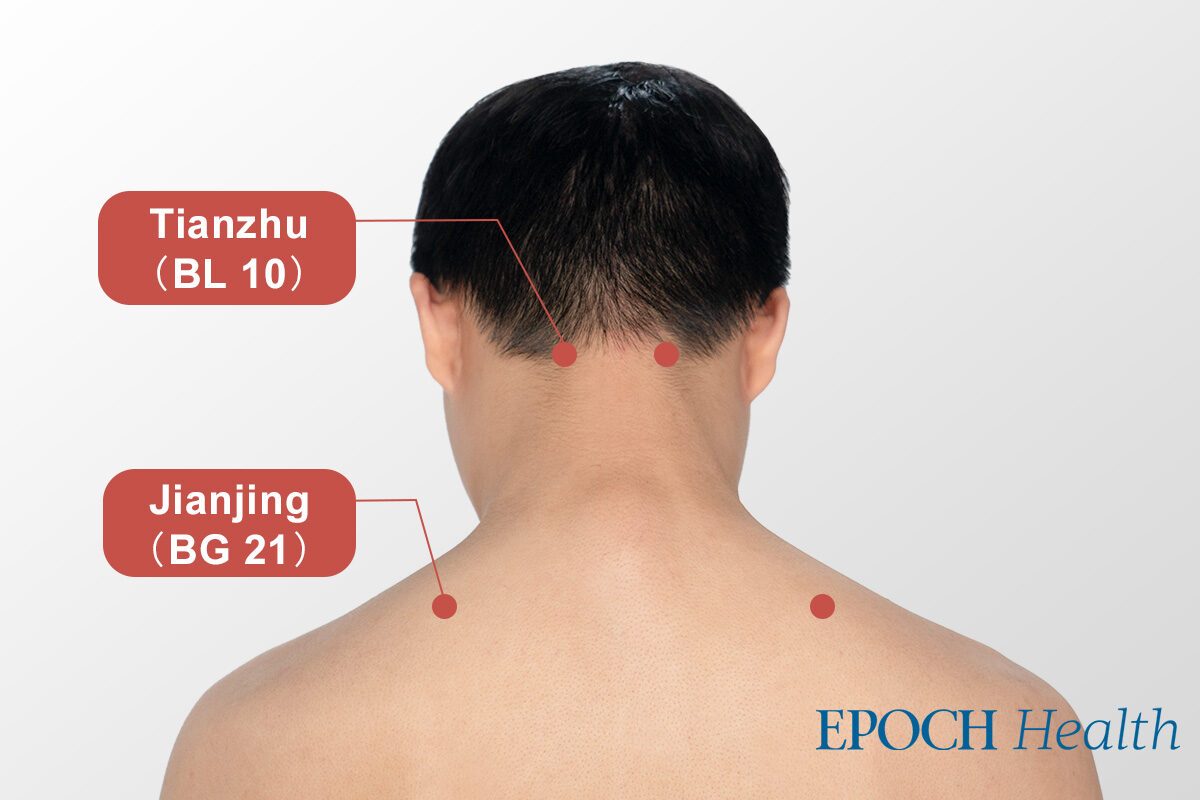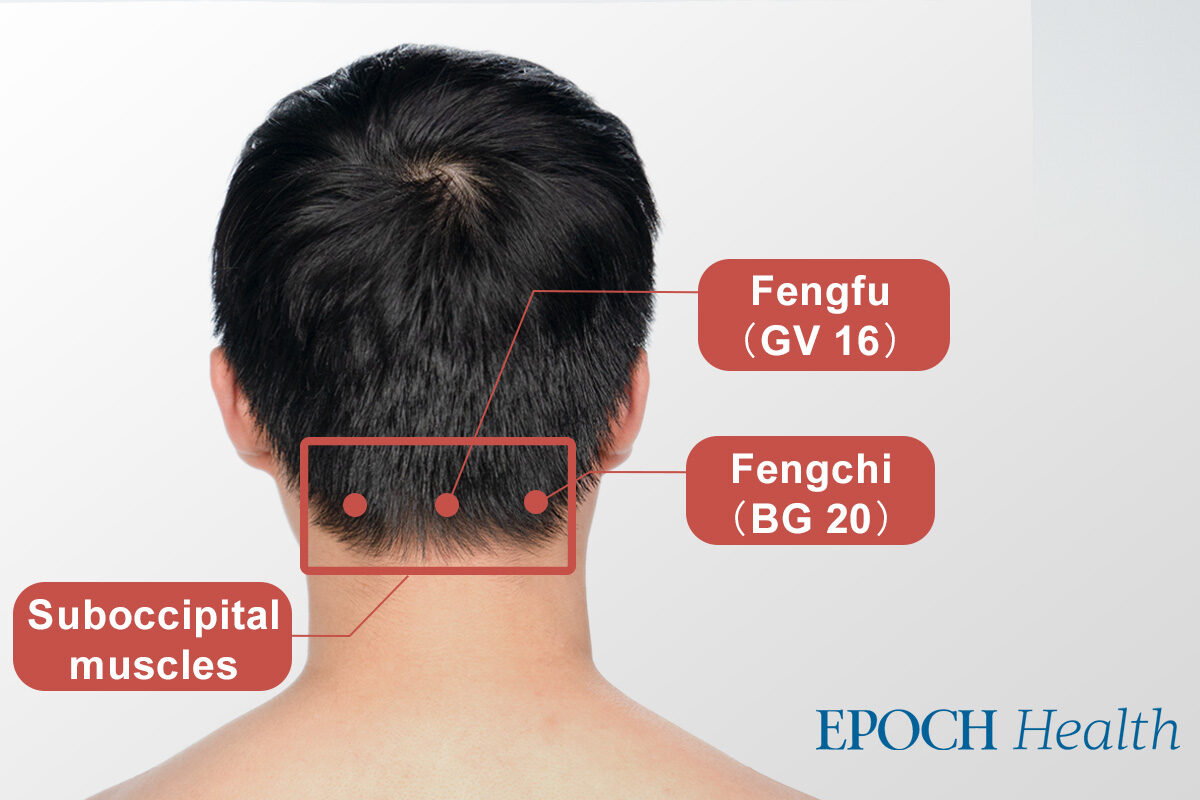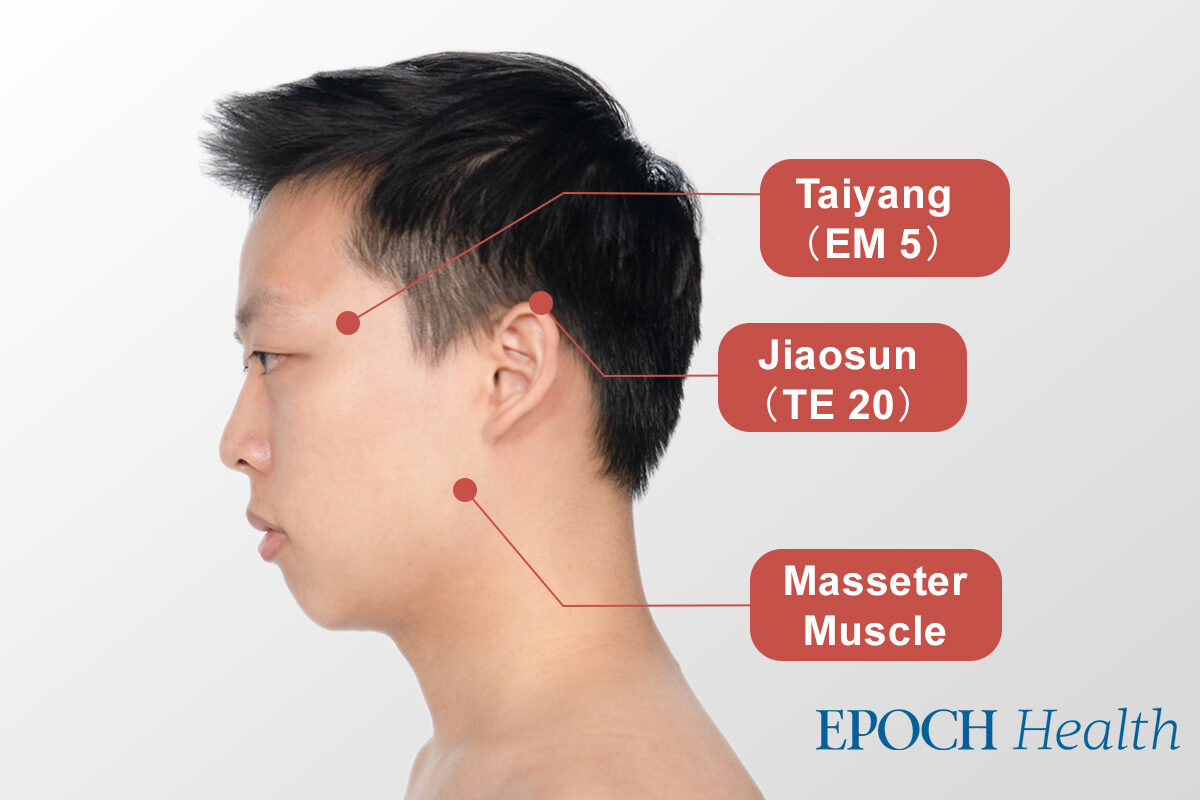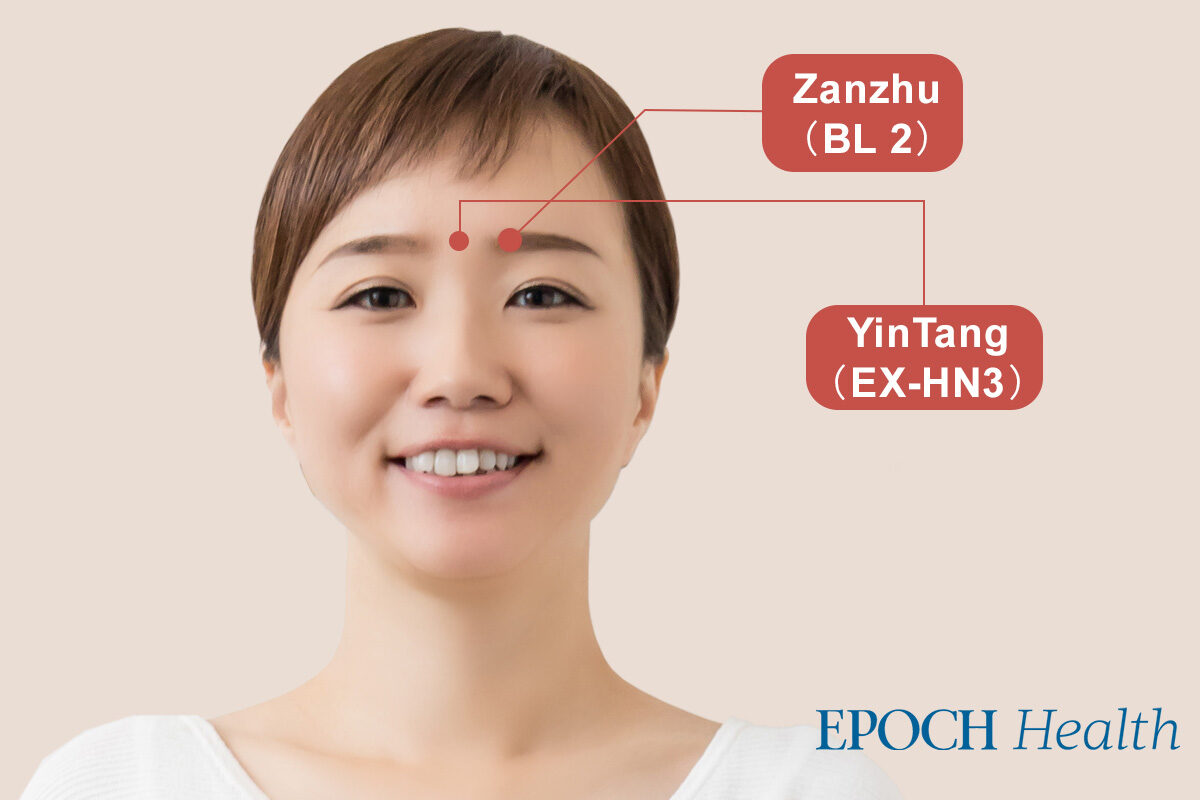Suffering From Migraines? An Ancient Therapy Can Bring Relief
There are more than fifty diseases that can cause headaches and in one kind of headache, pain pulsates and throbs with the heartbeat. This is called a migraine. Dr. Chen Chaolong, a physician at We Care Traditional Chinese Medicine Clinic in Taiwan, said that more than 90 percent of migraines are related to cervical spine misalignment. The good thing is, through self-examination, and head and neck acupoint massage, we can effectively solve migraine problems. General understanding in the medical world points to migraines as related to the rapid expansion and contraction of blood vessels and may also be related to an imbalance of the nervous system. In addition, bright light or noise, foods high in the amino acid tyrosine, such as cheese, chocolate, and pickles, drinking alcohol or coffee, or hormonal shifts before and after a women’s menstrual period may also cause a migraine. Chen said that the most common clinical type of migraine is cervicogenic migraine. It is caused by the misalignment of the cervical spine and the so-called “butterfly effect”—when one small movement affects the whole body. Any pain above the chest can be traced to the structure and muscles of the back, neck, and head. Self-Examination of Cervicogenic Migraine How does one self-diagnose whether a migraine is caused by a structural neck problem? Chen suggested that when you have a headache, you can make a comparison between the muscle tension on both sides of the neck. Usually, if the pain is on the right side, the right neck muscles will appear swollen, and you may even feel uneasy when turning that side of the neck. Sometimes X-rays indicate that there is nothing wrong with the cervical spine in terms of misalignment—so they are right! Chen said that slight misalignment of the cervical spine cannot be seen on X-rays, though it does cause muscle tension and discomfort, and even migraine headaches. The position of the migraine is related to the preferred hand one is accustomed to using. Right-handed people overuse the muscles on the right side, which will make the upper right chest and neck muscles tense, and long-term stiffness will result in inflammation and pain. Moreover, modern-day people are so accustomed to sitting for prolonged periods using electronic products that they have a substantial risk of having “bowed heads and turtlenecks,” which are also prone to cervical migraines. (Shutterstock) Acupoint Massage Improves Cervical Migraine If you want to ease the pain of a migraine, you need to correct the misaligned cervical spine. Chen said that first, rounding your back forward for a few moments can relax the back muscles. You can also become aware of and improve the posture of rounded shoulders, hunchback, and turtleneck. Additional soothing can be achieved through a series of shoulder and neck acupressure, performed on each acupoint for 5–10 seconds. Traditional Chinese medicine has discovered that the human body has a “meridian” system, which is a channel for the movement of “qi” (vital energy), and that the internal organs are connected to various parts of the body through the meridians. There are various acupuncture points along the meridian path, with corresponding links to various parts of the body. 1. Jianjing acupoint: Located on the midpoint of the line connecting the depression below the spinous process (the bony projection off the back of each vertebra) of the seventh cervical vertebra and the acromion (top outer edge of the shoulder blade). Pressing on this point can ease tension in the shoulder and neck muscles, relieve stress, and improve stiffness in the neck. 2. Tianzhu acupoint: Located in the depression on the outer edge of the hairline on the back of the head, about 2 finger widths from the center of the back hairline to both sides. Massage on this point can improve stiff neck, the “50 shoulders” (pain and stiffness of the shoulder without apparent cause), and relieve shoulder muscle pain. 3. Suboccipital muscles: This group of four muscles is at the junction of the back of the head and the neck and includes the Fengfu and Fengchi acupoints, among others. Myofascial tightness in the suboccipital muscles can easily cause headaches. 4. Masseter muscle: One of the muscles of mastication, the masseter sits at the position of the zygomatic arch and the mandibular angle on the lateral side of the zygomatic bone (forms the prominent part of the cheek and outer side of the eye socket). In general, speaking and eating functions rely on the masticatory muscles, so they can become stiff—properly relaxing them can help in preventing migraines. 5. Zanzhu acupoint: Located at the depression on both sides of the eyebrows. Acupressure here can relieve headaches, crooked mouth and eyes, and blurred vision. 6. Taiyang acupoint: The depression between the end of the eyebrow and the outer side of the eye. Acupressure here may relieve symptoms such as headaches and motion sickness. 7. Jiaosun acupoint: This point

There are more than fifty diseases that can cause headaches and in one kind of headache, pain pulsates and throbs with the heartbeat. This is called a migraine.
Dr. Chen Chaolong, a physician at We Care Traditional Chinese Medicine Clinic in Taiwan, said that more than 90 percent of migraines are related to cervical spine misalignment. The good thing is, through self-examination, and head and neck acupoint massage, we can effectively solve migraine problems.
General understanding in the medical world points to migraines as related to the rapid expansion and contraction of blood vessels and may also be related to an imbalance of the nervous system. In addition, bright light or noise, foods high in the amino acid tyrosine, such as cheese, chocolate, and pickles, drinking alcohol or coffee, or hormonal shifts before and after a women’s menstrual period may also cause a migraine.
Chen said that the most common clinical type of migraine is cervicogenic migraine. It is caused by the misalignment of the cervical spine and the so-called “butterfly effect”—when one small movement affects the whole body. Any pain above the chest can be traced to the structure and muscles of the back, neck, and head.
Self-Examination of Cervicogenic Migraine
How does one self-diagnose whether a migraine is caused by a structural neck problem? Chen suggested that when you have a headache, you can make a comparison between the muscle tension on both sides of the neck. Usually, if the pain is on the right side, the right neck muscles will appear swollen, and you may even feel uneasy when turning that side of the neck.
Sometimes X-rays indicate that there is nothing wrong with the cervical spine in terms of misalignment—so they are right! Chen said that slight misalignment of the cervical spine cannot be seen on X-rays, though it does cause muscle tension and discomfort, and even migraine headaches.
The position of the migraine is related to the preferred hand one is accustomed to using. Right-handed people overuse the muscles on the right side, which will make the upper right chest and neck muscles tense, and long-term stiffness will result in inflammation and pain. Moreover, modern-day people are so accustomed to sitting for prolonged periods using electronic products that they have a substantial risk of having “bowed heads and turtlenecks,” which are also prone to cervical migraines.
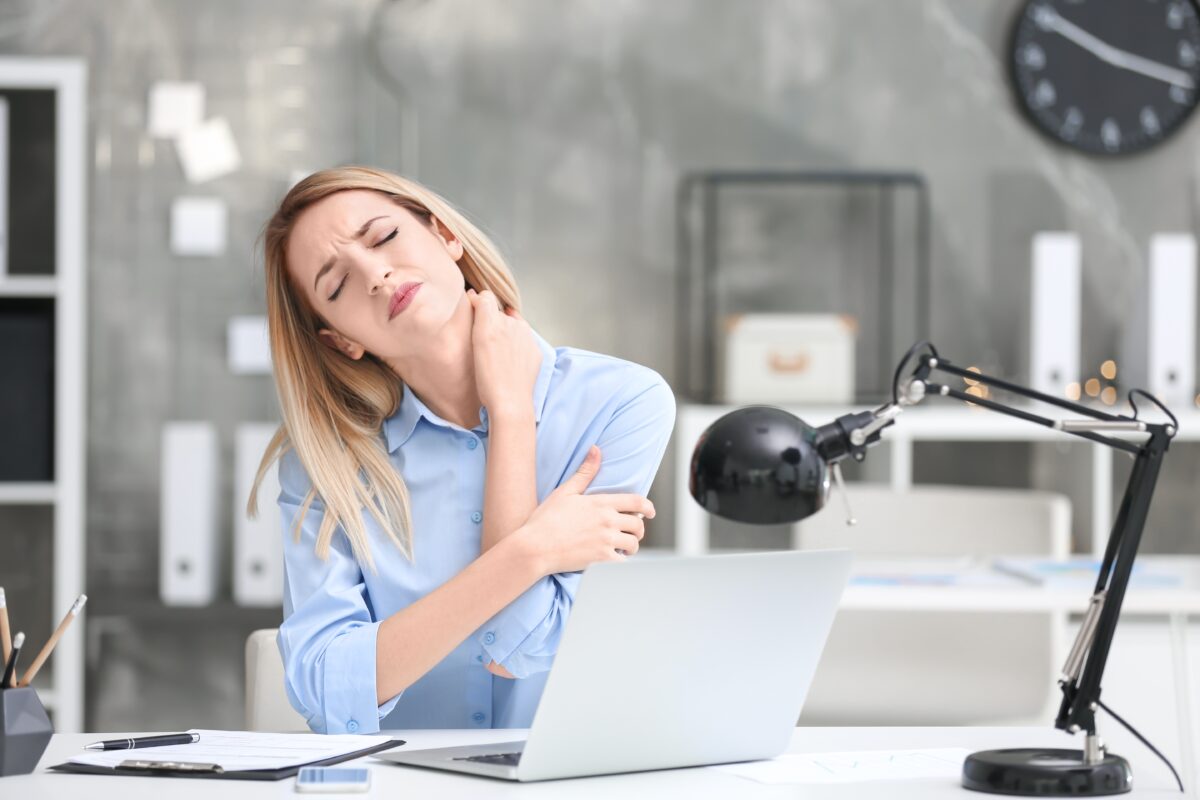
Acupoint Massage Improves Cervical Migraine
If you want to ease the pain of a migraine, you need to correct the misaligned cervical spine. Chen said that first, rounding your back forward for a few moments can relax the back muscles. You can also become aware of and improve the posture of rounded shoulders, hunchback, and turtleneck. Additional soothing can be achieved through a series of shoulder and neck acupressure, performed on each acupoint for 5–10 seconds.
Traditional Chinese medicine has discovered that the human body has a “meridian” system, which is a channel for the movement of “qi” (vital energy), and that the internal organs are connected to various parts of the body through the meridians. There are various acupuncture points along the meridian path, with corresponding links to various parts of the body.
1. Jianjing acupoint: Located on the midpoint of the line connecting the depression below the spinous process (the bony projection off the back of each vertebra) of the seventh cervical vertebra and the acromion (top outer edge of the shoulder blade). Pressing on this point can ease tension in the shoulder and neck muscles, relieve stress, and improve stiffness in the neck.
2. Tianzhu acupoint: Located in the depression on the outer edge of the hairline on the back of the head, about 2 finger widths from the center of the back hairline to both sides. Massage on this point can improve stiff neck, the “50 shoulders” (pain and stiffness of the shoulder without apparent cause), and relieve shoulder muscle pain.
3. Suboccipital muscles: This group of four muscles is at the junction of the back of the head and the neck and includes the Fengfu and Fengchi acupoints, among others. Myofascial tightness in the suboccipital muscles can easily cause headaches.
4. Masseter muscle: One of the muscles of mastication, the masseter sits at the position of the zygomatic arch and the mandibular angle on the lateral side of the zygomatic bone (forms the prominent part of the cheek and outer side of the eye socket). In general, speaking and eating functions rely on the masticatory muscles, so they can become stiff—properly relaxing them can help in preventing migraines.
5. Zanzhu acupoint: Located at the depression on both sides of the eyebrows. Acupressure here can relieve headaches, crooked mouth and eyes, and blurred vision.
6. Taiyang acupoint: The depression between the end of the eyebrow and the outer side of the eye. Acupressure here may relieve symptoms such as headaches and motion sickness.
7. Jiaosun acupoint: This point can be located by folding the ears forward, and is at the hairline at the top of the ears. Acupressure here helps with cloudy eyes, stiff neck, and ear swelling.
